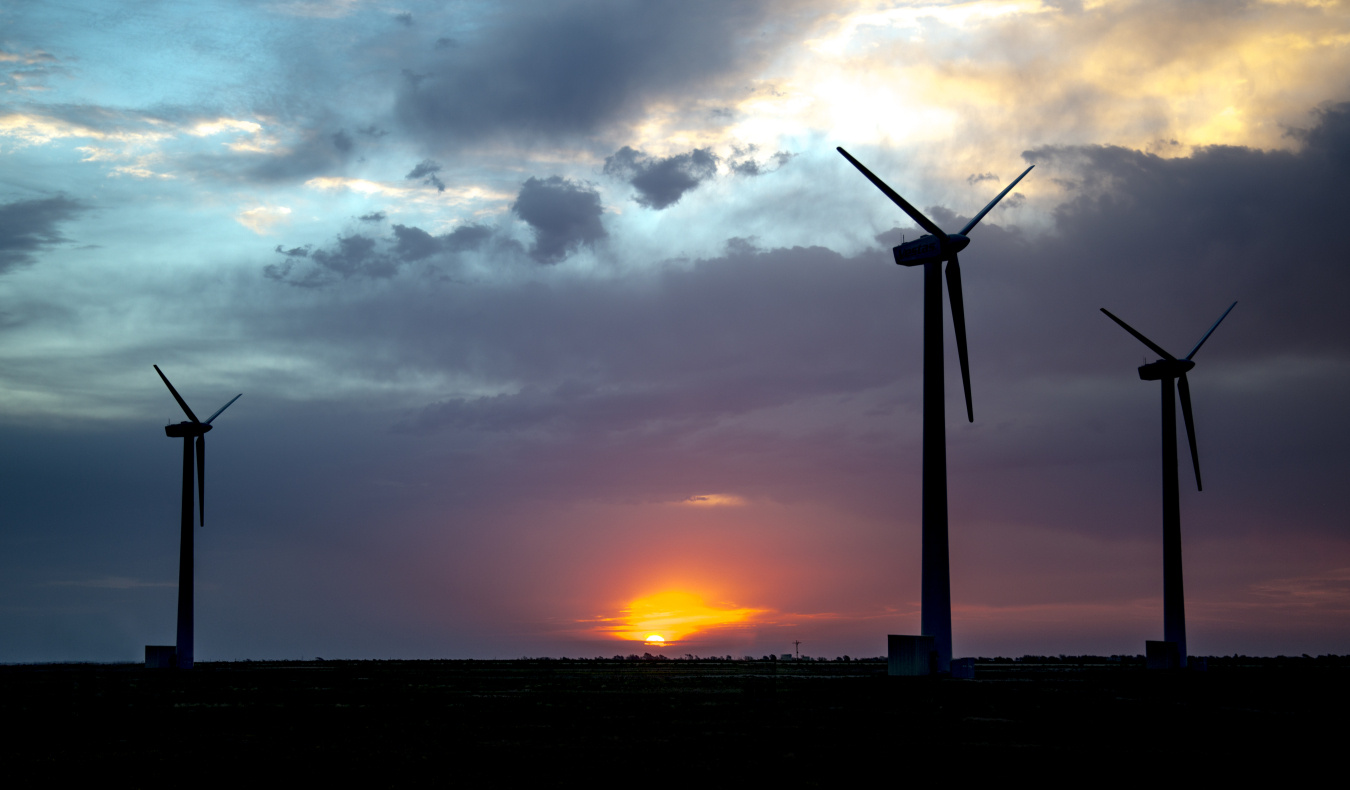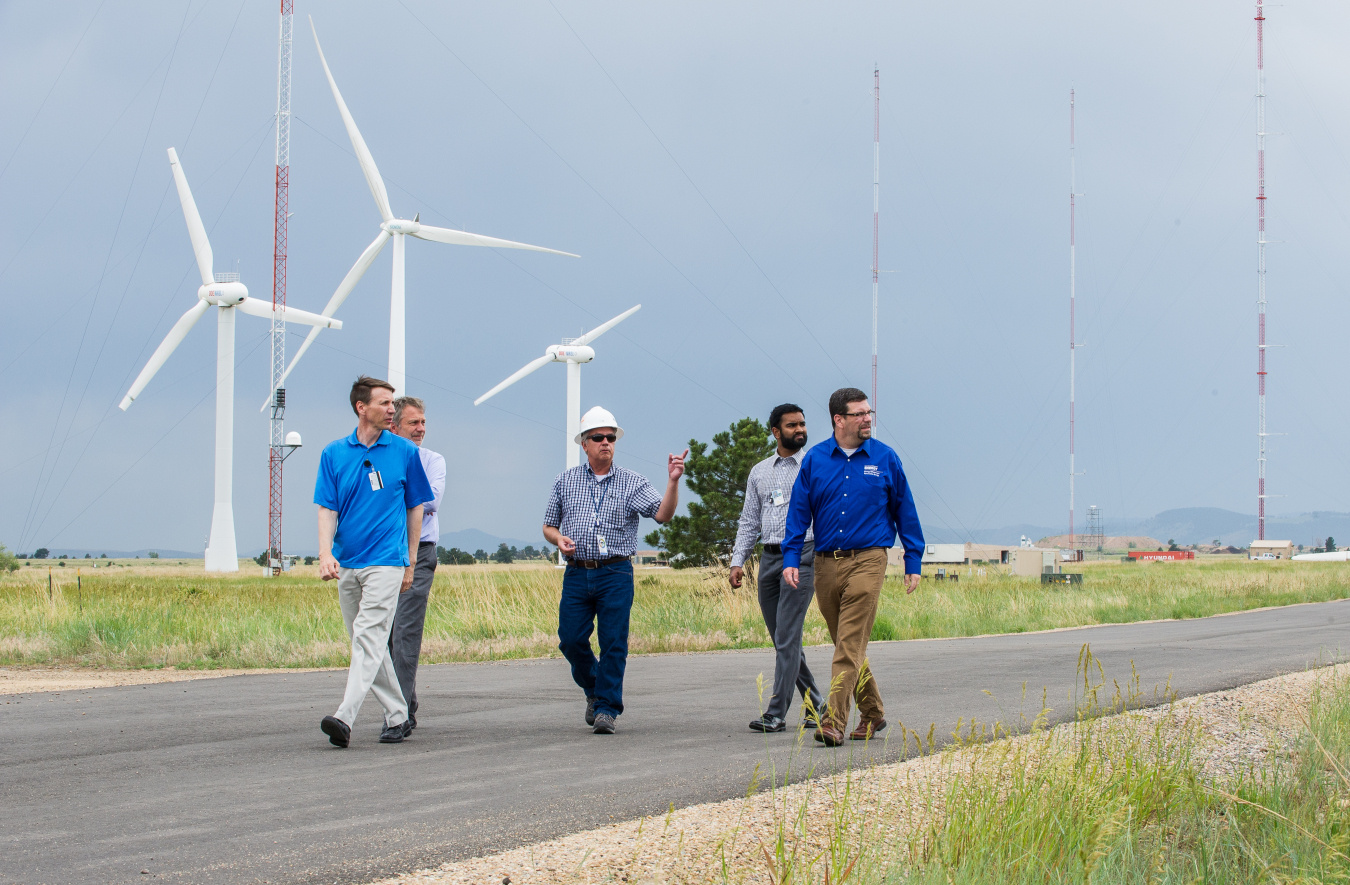The U.S. Department of Energy’s (DOE’s) Wind Energy Technologies Office addresses a number of pressing energy needs, from improving technology ...
December 14, 2016
Photo Courtesy | Sandia National Laboratory

Assistant Secretary of the Office of Energy Efficiency and Renewable Energy David Friedman visiting the Wind Testing Facility at the National Renewable Energy Laboratory. Photo Courtesy | National Renewable Energy Laboratory
The U.S. Department of Energy’s (DOE’s) Wind Energy Technologies Office addresses a number of pressing energy needs, from improving technology performance to advancing wind turbines’ design and size to facilitating grid integration of renewable energy. Since wind energy research began in the United States in the 1970s, DOE has brought together industry, academia, and key research institutions to help overcome wind energy deployment challenges related to cost, design, materials, efficiency, and environmental stewardship.
The Opportunity: Making Wind Energy More Efficient and Affordable
In the late 1990s, costs of large wind turbines were high. DOE prioritized research and development (R&D) that would reduce these costs while achieving greater efficiency in turbine and wind farm operations. DOE and the national laboratories then created robust partnerships with industry to bring their innovations to the market.
The Pathway: Partnering with Large and Small Businesses to Improve Wind Technologies
DOE’s industry partnerships run the gamut from large corporations, like General Electric (GE) and Siemens, to small businesses, such as those involved in the New Mexico Small Business Assistance Program and the Technology and Commercialization Assistance Programs at Pacific Northwest National Laboratory, National Renewable Energy Laboratory (NREL), and Idaho National Laboratory. Thanks to these collaborations, industry can leverage more than 110 DOE-funded wind energy patents to improve their products. NREL’s National Wind Technology Center (NWTC), which serves as the nation’s premiere wind technology research facility, is an especially strong asset for performing full-scale testing of wind turbine reliability and performance.
For example, NREL worked with GE Wind Energy to develop its 1.5-megawatt (MW) wind turbine, which became the quintessential American turbine in the wind energy market. NWTC also installed one of these turbines to allow lab, industry, and academic researchers to test their own technological developments.
“NREL has really committed to testing, all the way from components to turbines to the grid, and that’s a real value for us. Possessing the capability to have a grid interface with utility-scale turbines really improves our development,” noted Tom Fischetti, executive, Onshore Wind Systems Engineering with GE Renewable Energy.
Elsewhere, Sandia National Laboratories’ (SNL’s) scientists worked with Knight and Carver to develop the Sweep Twist Adaptive Rotor wind turbine blades, which produced 30% more electricity than previous designs. These partnerships represent just a few of the lab-industry collaborations that have resulted in more efficient wind turbines capable of better producing and storing wind energy.
The Breakthrough: Advancing Wind Energy through Research and Testing
Throughout decades of wind energy-related R&D, DOE and its industry partners have improved performance and reliability of turbines and wind power plants by innovating materials, control mechanisms, grid services, and other wind energy components. For example, almost all wind turbines today are designed to capture laminar airflow—wind that is steady and consistent. This is a direct result of the national laboratories using advanced high-performance computing and modeling to demonstrate that turbines capture energy more effectively from laminar rather than turbulent airflow.
Research by the national laboratories and their partners has also helped increase the size-to-power ratio of wind turbines from 16 meters tall with 15-meter rotor diameters—requiring a farm of 100 turbines to produce 1 MW of power—to turbines more than 100 meters tall and capable of producing 3 MW of power individually. NREL and the other labs have developed technologies such as variable pitch turbine rotors, which adjust based on wind speed; advances in blades via the use of carbon composite material; bend-twist coupled blades; aeroelastic tailoring; and grid interoperability tools.
The Impact: Creating a Future Powered by Wind Energy
Today, wind power is cost-competitive with fossil fuels in parts of the country with good wind resources. In fact, its cost has dropped from more than $0.55 per kilowatt-hour in 1980 to about $0.03 per kilowatt-hour today.
Wind energy technology currently supports approximately 88,000 U.S. jobs, comprises 500 manufacturing plants in 43 states, and represents a multi-billion-dollar market. There are currently more than 75 gigawatts of wind installed in the United States, enough to power 20 million homes and providing more than 5% of U.S. electricity.
However, research won’t stop here. One focus area is improving “tall wind” land-based deployment, which will include lowering transportation costs of wind turbine parts and investigating the potential for self-erecting turbines via lifting frames or climbing frames. DOE is also improving offshore wind technology and studying how turbine systems can be optimized despite currents, deep water, and weather conditions. Additionally, DOE is optimizing wind plant performance so that the wake behind one wind turbine does not negatively impact neighboring turbines.
These efforts supports DOE’s Wind Vision scenario, in which 20% of all electricity in the United States could be derived from wind power by 2030.

